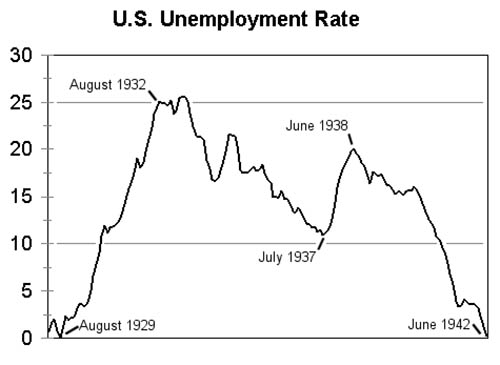There are actually six different “unemployment rates,” although predominantly when people use that term in cocktail party banter, they mean “the number of people looking for work who can’t actively find it.” But by no means is that the entire picture (I wrote about this a little bit when I was just starting this blog). First, you need to consider this — U.S. labor force as a percentage of population peaked in 1999 at 67.1 percent. Phrased another way, it’s like this: since these stats started being recorded, the highest percentage of the population actively in the labor force was never above 7 in 10.
Now consider this: after the 2008 downturn, essentially six million (6,000,000) workers straight up left the job rolls, and the largest sub-section of those six million was men aged 25-54 — i.e. men in their peak-earning years:
You can read this a couple of different ways:
1. There weren’t enough people actively hiring after the downturn, so people who were laid off searched for a year or so, got frustrated, and turned to other things (freelance, taking care of kids, going back to school).
2. There simply aren’t enough jobs.
3. Americans have become frustrated with the job market, the hiring process, and the like and are just straight-up exiting the process (similar to No. 1).
The conclusion of the paper that produced the above chart — read the paper here — is more towards No. 2 above: there aren’t enough jobs. In fact, the author of that paper thinks that we would need 7.9 million jobs created (about 4.3 million for men, the rest for women) to reach healthy, pre-downturn levels. That’s a lot of jobs.
Biggest point here: it’s not really about the unemployment rate, per se — especially when you consider there are six different ones — but it’s more about job creation rate. We’re only adding about 209K jobs per month now, which means we have a long way to go for that 7.9 million.
Sometimes I think this is the bottom line on what happened with the recession / downturn of 2008:
- Stuff blew up / fell apart.
- People realized their jobs and investments and security weren’t Teflon and the US could falter.
- People started to think more about themselves and their families.
- This trickled down to management and hiring.
- People don’t necessarily care about helping others find work, so long as they’re taken care of.
- In sum, the downturn had a bigger psychological / emotional impact than a purely economic one.
Maybe that’s naive, but that’s kind of how I look at these days.
Also in keeping with the “Eh, we care less and want to protect ourselves in case this all happens again” motif: pay is down 23 percent even as jobs get created.


Reblogged this on Commentary by Allan and commented:
The author is right — the unemployment rate is hard to understand, but the video provided here is a good tutorial. I spent some time trying to better understand this subject myself and wrote up the results on my blog, in the post “Working Till 2025: Life is Tough These Days.” I came up with an imperfect way of measuring what I call “at risk workers.” Reading this inspires me to update the table and associated graph in my post to see how things have changed.